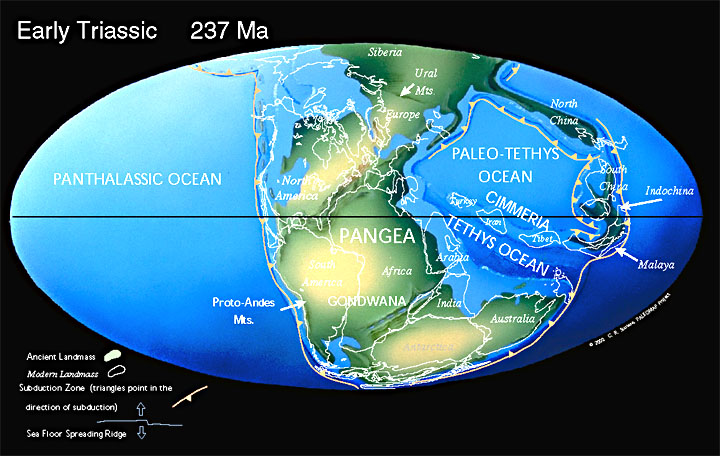I think you are confused about the timescales and the magnitude of the impact that is being talked about here.
The collision between the early Earth and a roughly Mars sized body, Theia is thought to have happened between 4.4 and 4.45 billion years ago. The Pangaea supercontinent had fully assembled by around 250 million years ago. Previous to this there are a number of other supercontinents which have been recognised, the oldest speculative ones dating back to around 3 billion years ago. The Earth's crust is constantly being reshaped by plate tectonics and so the location of an impact at 4.4 billion years ago has no bearing whatsoever on the orientation of the Pangaea (or any other) supercontinent.
In addition, based on computer simulations of the impact, we know that the impactor mass must have been on the order of 0.1 Earth masses and the initial impactor velocity must have been something like 5 km/s. This means that a colossal quantity of energy would have been released by the impact which would completely reshape any surface structure (and much of the internal structure) that the Earth may have had at that early stage. Indeed, a significant quantity of the mass of the two impactors was put into orbit around the Earth by the impact, either as solid debris, some of which coalesced to form the Moon, or as vaporised rock. Due to the complete lack of direct evidence, it is difficult to determine the exact impact parameters, including the impact angle. Some simulations suggest a fairly moderate angle of impact of around 45° [1], but there is some geochemical evidence from the Moon to suggest a higher angle of impact, with higher energies involved [2][3].
References:
[1] http://www.sciencedirect.com/science/article/pii/S0019103503002999
[2] http://science.sciencemag.org/content/351/6272/493.full
[3] http://science.sciencemag.org/content/338/6110/1052.full
